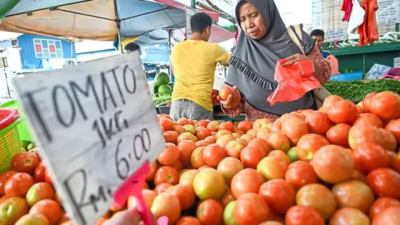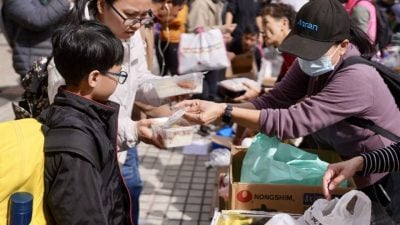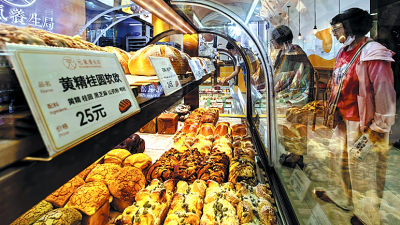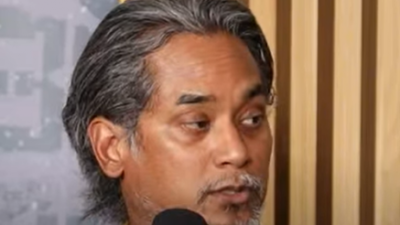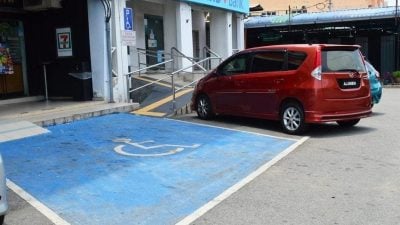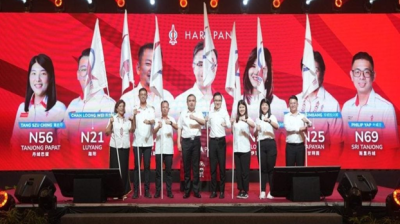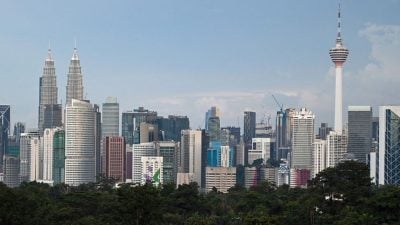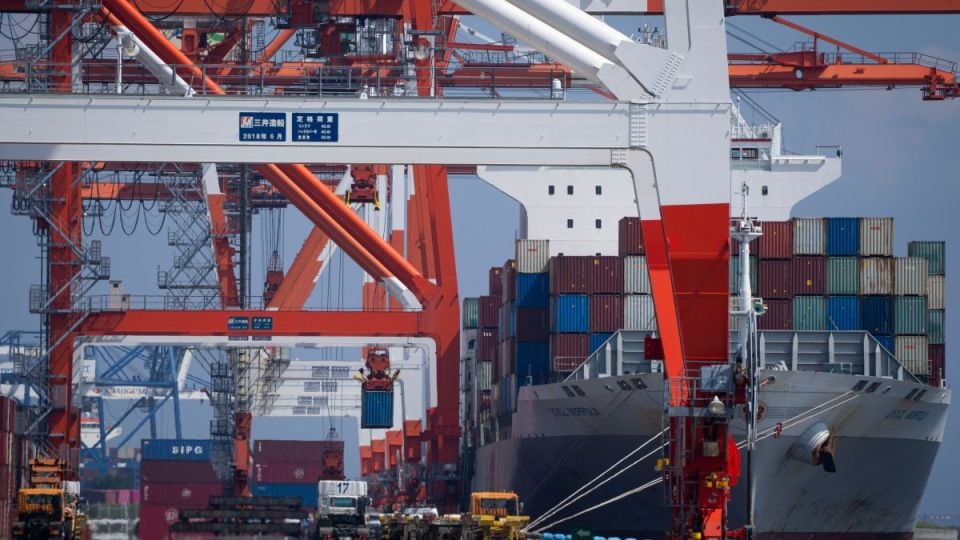
WASHINGTON/TAIPEI/KUALA LUMPUR :The politely-worded letters arrived in waves, laying out the consequences for Japan, South Korea, Malaysia, Indonesia, Thailand and others for failing to strike a deal in time to ward off the elevated tariffs unilaterally announced by President Donald Trump in early April and then paused until July 9.
Mr Trump began with his East Asian allies, telling Japanese Prime Minister Shigeru Ishiba and South Korea’s President Lee Jae-myung that their imports to the US will attract 25 per cent tariffs beginning on Aug 1.
In the hours that followed, most South-east Asian nations got their mail from the White House.
For Malaysia and Indonesia, both in vigorous negotiations to clinch a deal over the weekend, Mr Trump’s letter specified the reciprocal tariff at 25 per cent and 32 per cent, respectively. For Thailand, the notice said 36 per cent and in the case of Laos and Myanmar, 40 per cent each. These rates are mostly in line with Mr Trump’s April announcement when he shocked the region by imposing some of the highest tariffs here.
Malaysia and Japan’s new rates rise a little from the 24 per cent announced earlier. For Laos and Myanmar, the rates fall from 48 per cent and 44 per cent, respectively. There was no explanation offered for the change.
The surprise was for Cambodia which was told its goods would incur a 36 per cent tariff, far lower than the 49 per cent tariff in Mr Trump’s original announcement.
Singapore, India and Taiwan, among others, have not yet heard from the White House
The letters, identical in wording, were posted on Truth Social on July 7 afternoon, or from 12.30am on July 8 SGT. They also said that America’s trading partners will face sectoral tariffs that apply on export of items like autos (25 per cent) and steel and aluminium (50 per cent) – which will hit manufacturing powerhouses like China, Japan and South Korea hard.
And in line with the US policy of clamping down on goods transshipped from China to evade higher tariffs applicable on Chinese imports, there was a mention of higher tariffs on such goods. The rate was not specified however.
It was also made clear that if the nations choose escalation and retaliate with tariffs of their own on US goods, Washington will respond in kind by tacking on more tariffs of equal magnitude.
Although Mr Trump opened the letters with a reference to the strength of the trading relationships, he brought up his unhappiness with the large and chronic trade deficits racked up by the US.
His message to the recipient nations – and to those who have yet to get their letter – was unambiguous: You have three weeks to cut a deal before the higher tariffs kick in.
But his erratic negotiating style also burdens the White House with a credibility problem. Is the next milestone of Aug 1 also a moving goalpost?
“This is a rerun,” said Mr William Alan Reinsch, an expert in economics and international business at CSIS. “Clarify the threat, extend the deadline, and hope that leads to a deal.”
It is an attempt to push the nations to make more concessions since it’s clear from the US point of view neither of them has made enough so far, he noted.
“The obvious question, of course, is that as August 1 approaches and there are still no deals, will Trump extend the deadline again – and perhaps increase the tariffs – or will he actually impose the tariffs.”
Higher prices and slowing economies
The road to tariff agreements has been littered with false starts. Treasury Secretary Scott Bessent had said in late June that the US hoped to wrap up trade talks with them by the start of September.
And in April, trade adviser Peter Navarro had suggested 90 deals would be done in 90 days. While this did not transpire, the series of letters released on July 7 announcement appear to hint at an end to the uncertainty even if the impact on trade is unwholesome.
It’s unfortunate that President Trump has announced 25 per cent tariff hikes for two of its closest allies, Japan and South Korea, said former US trade negotiator Wendy Cutler.
“Both have been close partners on economic security matters and have a lot to offer the US on priority matters like shipbuilding, semiconductors, critical minerals and energy cooperation,” said Ms Cutler who is now vice-president at the Asia Society Policy Institute (ASPI).
Companies from both countries have made significant manufacturing investments in the US in recent years and provided high-paying jobs to US workers, she added. And both are key markets for a variety of US goods from pork to planes.
Mr Reinsch said there was no good news to be had from the tariffs. “A 25 per cent tariff will have a major impact on Korean and Japanese exports to the US, including things that are in demand here like autos and semiconductors.”
“They will mean higher prices here and a slowdown in the economies of the other two countries,” Mr Reinsch said.
The ongoing Section 232 investigations that may lead to additional tariffs on autos and semiconductors are another worry, he said.
The July 7 announcement sends a chilling message to others, Ms Cutler said.
It suggests that the US will not be open to reprieves from the Section 232 sectoral tariffs, including on autos, a high priority for both Japan and South Korea.
But she also saw a less glum side.
“While the news is disappointing, it does not mean the game is over,” said Ms Cutler.
“We cannot rule out a breakthrough in negotiations in the lead up to Aug 1, when the additional tariff hikes are to take effect,” she said.
Waiting in the wings
Some excitement surrounds the possibility of a‘ mini’ trade deal with India.
Negotiations are believed to be centred around India opening up certain segments of the agriculture and dairy sector while seeking lower than 26 per cent tariffs for the textile and footwear sectors among others. India is also seeking concessions on auto parts apart from reduced tariffs on aluminium and steel.
India is unwilling to concede to the US demand for exports of genetically modified crops like corn. Any concessions seen as unreasonable by its strong farm lobby would have a direct political impact on the Narendra Modi government.
Sources said India has the July 2 deal struck by Vietnam in mind as they seek an accommodation with Mr Trump. India and Vietnam are competitors in areas like electronics and textiles.
“It’s no longer just about tariffs anymore, it’s about comparative tariffs since Vietnam has 20 per cent,” said an industry insider.
The US-Vietnam deal will see American goods enter Vietnam duty-free while the US charges 20 per cent tariffs on Vietnamese goods instead of the 46 per cent tariffs announced by Mr Trump in April.
Goods made in other nations, such as China, that are trans-shipped from Vietnam will be charged a higher tariff of 40 per cent, addressing an issue that has long rankled with the US.
The countries’ negotiators are, however, still in talks to finalise the details of the deal.
China, which had been hit by a different set of tariffs springing from on its role in the fentanyl smuggling and alleged unfair trade practices, also reached a trade truce with the US in late June.
However, the details are under wraps and Washington has already complained of slow progress in China’s promise to resume tech industry’s demand for rare earth-related exports to the US.
Stressful times ahead
While the government negotiators haggle over clauses, Asia’s businesses are gearing up for tough times.
The tariffs are expected to slow economic growth, increase consumer prices, trigger job losses, and trigger market volatility in the region.
Mr Bai Tsan-jung, chairman of Sun Jen Textile Company in Taiwan, has not slept well since the US announced in April that it would slap a hefty 32 per cent tariff on goods from the island.
Should Taipei fail to negotiate a deal with Washington by July 9, around half of Mr Bai’s 110-member workforce may have to be furloughed or forced into early retirement.
“This has been the most stressful and challenging period for my company in our 40-year history – this is worse than Covid or Sars,” he told The Straits Times.
His business had already seen sales dwindle for some years as customers have turned to China for cheaper materials, but he said that it has survived because of the high quality of the textiles his firm produces.
“But a steep US tax on our goods could be the final blow for us,” he added.
Mr Bai’s company, which produces nylon and other yarn, does not export directly to the US, but its main customers – garment factories in Taiwan, Indonesia and Vietnam – do.
“US tariffs do not affect only the companies that sell directly to the US – everyone in the supply chain is impacted,” he said. “If those factories suffer because of tariffs, they won’t take orders from my company either.”
There is a similar sense of uncertainty over at TopTowel, an original equipment manufacturer of towels for sportswear and lifestyle brands. The US accounts for around 18 per cent of the firm’s exports.
Mr Bruce Chang, the company’s sales manager, said that the firm has been trying to secure orders in more countries.
He told ST over the telephone: “I’m currently in Japan, meeting with potential partners and clients. The huge uncertainty over the US tariffs means that we need to look at opening up new markets, such as Australia and Europe.”
Taipei, whose economy is heavily reliant on exports, has scrambled to reach compromise and to show Washington that it takes trade rules seriously as the spectre of hefty US tariffs looms.
The island has repeatedly vowed to ensure that it does not become a place for Chinese exporters to dodge US tariffs with fake “Made in Taiwan” labels. It has also pledged to buy more American goods, including US natural gas, to help narrow the trade deficit.
In Kuala Lumpur, analysts believe that a negative impact on the domestic economy is the cards, irrespective of whatever deal is struck.
There are growing expectations that Malaysia’s central bank will cut interest rates by 25 basis points to 2.75 per cent at its next policy meeting, coincidentally falling on July 9.
“We expect the cut to materialise largely as a means of preempting a potential slowdown in domestic demand,” said a June 25 HSBC report.
ADVERTISEMENT
ADVERTISEMENT






